
Jönköping is a city in southern Sweden with 112,766 inhabitants (2022). Jönköping is situated on the southern shore of Sweden's second largest lake, Vättern, in the province of Småland. In late 2019, Jönköping was seen as the city with best future prospects in Sweden by WSP.
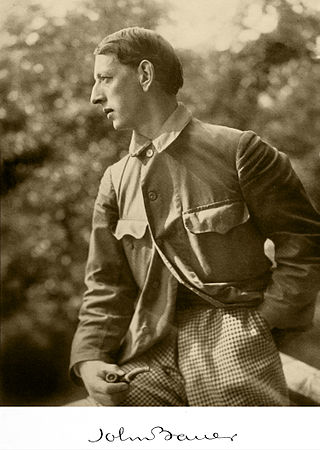
John Albert Bauer was a Swedish painter and illustrator. His work is concerned with landscape and mythology, but he also composed portraits. He is best known for his illustrations of early editions of Bland tomtar och troll, an anthology of Swedish folklore and fairy tales.
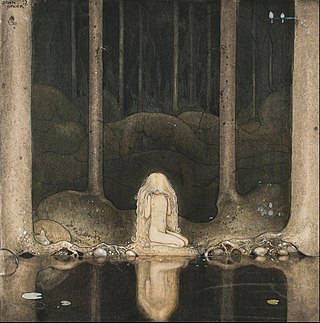
Among Gnomes and Trolls, is a popular Swedish folklore and fairy tales annual and children's fairy tale anthology published since 1907. One of the most noted of the early illustrators is artist John Bauer.

The ruins of Brahehus Castle are located 3 km (2 mi) outside of Gränna in Jönköping County in the province of Småland, Sweden. The ruins sit 270 m (890 ft) above sea level and 180 m (590 ft) above the lake Vättern, providing a panoramic view of the lake and the island of Visingsö. Built for and named after Count Per Brahe the Younger in the 1640s, the castle was abandoned by the 1680s and suffered a fire in 1708. The castle is near the modern E4 highway and is a popular destination for recreation and tourism.

Lovisa Sofia Augusti was a Swedish opera singer (soprano). She was regarded as one of the most noted opera singers of the Royal Swedish Opera during the Gustavian era. She was appointed Hovsångare in 1773 and inducted to the Royal Swedish Academy of Music in 1788.

Louise (L) Lidströmer is a Swedish artist who studied at the Royal Swedish Academy of Arts in Stockholm 1967–72. She works with paintings, sculpture and object installation, and has presented large series of exhibitions in and outside Sweden.
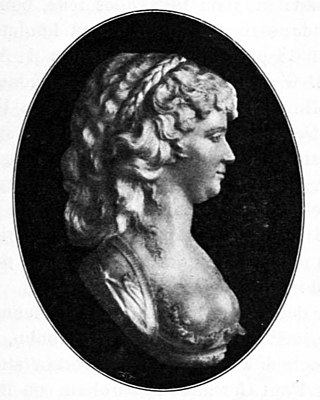
Sofia Franziska Stading was a Swedish opera singer of German origin. She is referred to as one of the more notable opera singers in Sweden during the Gustavian era. She was a Hovsångare and member of the Royal Swedish Academy of Music from 1788.

Emilia Augusta Clementina Broomé, née Lothigius, was a Swedish politician (liberal), feminist and peace activist. She was the first woman in the Swedish legislative assembly (1914).

Lummelunda is a populated area, a socken, on the Swedish island of Gotland. It comprises the same area as the administrative Lummelunda District, established on 1 January 2016.

Johan Krouthén was a Swedish artist. He broke away from the traditions of the Swedish Academy, turning to Realism and Idealism. Immediately after his studies, he spent a few months in Paris and in Denmark where he associated with the Skagen Painters. Back in Sweden he painted pictures of gardens and portraits of local people.

Gertrud Carolina Månsson, was a Swedish municipal politician. She was the first female member in the Stockholm City Council, and also the first elected female politician of her country as a whole (1910).
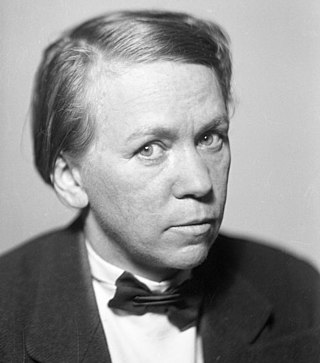
Siri Karin Derkert was a Swedish artist and sculptor. She was also a strong advocate for peace, feminism and environmental issues.

Ida Eléonora Davida von Schulzenheim (1859–1940) was a Swedish painter. Her foremost motif was paintings of animals.
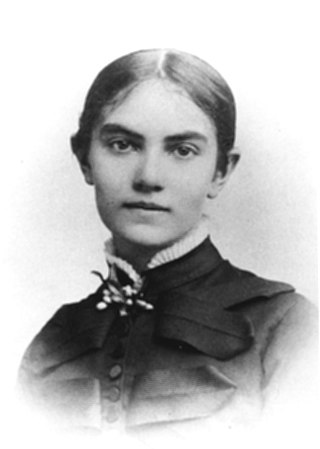
Karin Larsson, née Bergöö, was a Swedish artist and designer who collaborated with her husband, Carl Larsson, as well as being often depicted in his paintings.

Tofta, also known as Gotlands Tofta, is a populated area, a socken, on the Swedish island of Gotland. It comprises the same area as the administrative Tofta District, established on 1 January 2016.

Sundre is a populated area, a socken, on the Swedish island of Gotland. It comprises the same area as the administrative Sundre District, established on 1 January 2016.
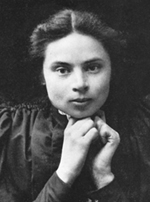
Ester Dorothea Almqvist was a Swedish artist who was a pioneer of Expressionist painting in Sweden.
Gordon Rossiter is a British-Swedish artist, living and working in Sweden. Much of his subject matter is inspired by life in the Salvation Army.

Jönköping County is one of the 29 multi-member constituencies of the Riksdag, the national legislature of Sweden. The constituency was established in 1970 when the Riksdag changed from a bicameral legislature to a unicameral legislature. It is conterminous with the county of Jönköping. The constituency currently elects 11 of the 349 members of the Riksdag using the open party-list proportional representation electoral system. At the 2022 general election it had 271,666 registered electors.
The Third Folkung Uprising was the last uprising known for the political power of the Folkungs. The insurgents, who were led by the known Folkung Johan Filipsson, started the revolt in hopes to end the leadedship of Sweden's current King, Magnus Ladulås.


























